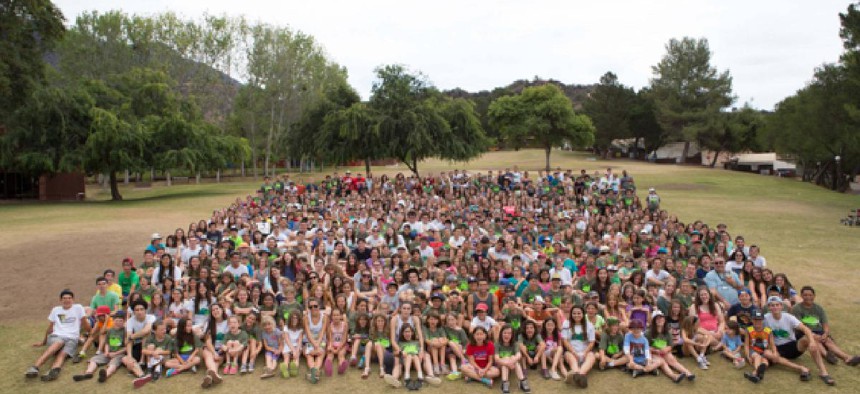Revenue Generation: Fresh ideas to help your nonprofit raise funds

Nonprofit organizations are engaged in a zero-sum game, with more parties competing for a limited philanthropic pie cut into increasingly smaller slices.
In the last 35 years the nonprofit sector has exploded. In 1980, there were only 320,000 organizations registered as tax-exempt public charities. For 2015, that number is estimated to be more than 1 million. Meanwhile, charitable giving has hovered around 2 percent of GDP for much of the last four decades, yet many nonprofits still tap the same funding sources and rely on the same tired approaches – often incurring a heavy cost of fundraising.
It’s time to change the game.
Nonprofits urgently need to reconsider their approaches and think more creatively about raising capital. Most nonprofits have assets that are either underutilized, not utilized during an “off-season” or not utilized at all. Non-donation revenue streams can be created by charging the public or other businesses a fee to use or access a nonprofit’s assets when they’re not being utilized. Similarly, newer online fundraising techniques and platforms aimed at helping specific categories of nonprofits can raise funds from more people with lower costs per dollar raised.
Recent research by Stax Inc. identified that two-thirds of Fortune 200 CEOs sit on an average of two nonprofit boards. Combine this with millennials’ desire to make an impact and corporations’ interest in providing more corporate social responsibility offerings and there may be an opportunity for nonprofits to experiment with new ideas and new partners to think through and test these ideas.
Consider these three examples of nonprofits around the country that successfully created new revenue streams in ways that either aligned with their mission – or did not detract from their mission – and made use of corporate partnerships:
Symphony Space, a nonprofit theater in Manhattan, struck a deal with the developer Related Companies in which Related paid for the air rights to build around and over the performance space, leaving its historic facility intact. The theater company was able to monetize its unused land value and generate funds for major renovations while keeping its original location.
The DeCordova Sculpture Park and Museum in Lincoln, Massachusetts, which fosters the creation, exhibition and exploration of contemporary sculpture and art, loans works of art to corporations around Boston for a fee, generating more than $650,000 per year that goes toward the organization's annual budget. This partnership extends the museum’s branding and revenue.
Camp Ramah’s Ojai, California location books corporate meetings, retreats, family weekends and other special events during its off-season, generating enough additional revenue to sustain their corporate facilities and upgrade the quality of Camp Ramah’s overall maintenance while broadening its brand, reach and ability to serve the community.
Nonprofits also have to think about more cost-effective fundraising efforts. The emergence of niche crowdfunding platforms offers fundraising that can help your nonprofit extend its reach, offers an easier way to engage potential supporters and track funders and helps make each one a champion for your cause by quickly recognizing their support. It also allows nonprofits to fundraise without an event. Crowdfunding does require some research and consideration to make it a good fit for your team. For example, a web-based platform called Edco focuses entirely on K-12, making it easy for teams, clubs and the schools themselves to express their programs, share them with the community and start engaging, raising funds and tracking donations with transparency. It allows schools to target the same people in the community who would traditionally be targets for wrapping paper or candy sales. While traditional school fundraisers yield 50 cents on the dollar (and people do not always want the products), schools using Edco get almost twice the proceeds – 95 cents on the dollar.
When implementing these strategies, nonprofits must bear in mind that income over $1,000 may have to be reported as Unrelated Business Income tax. They will also want to proceed carefully and be very transparent to all relevant stakeholders about any new revenue streams to avoid perceived or actual conflicts of interest.
Nonprofit leaders may be tentative about some of these opportunities to boost revenue generation and move to more cost-effective fundraising, but if they care about expansion, they have an obligation to explore them – not only to expand the pool of capital for nonprofits but also to establish themselves as leaders in this area. An institution may use these opportunities to lay the groundwork for long-term fundraising by introducing new audiences to its good work, building brand awareness and widening the funnel for new donors.
The good news is that there are numerous nonprofit leaders interested in growing the impact of their organizations and an abundance of resources available to help them, including board members, corporations like The Related Companies, millennials and new social ventures like Edco. These resources and partnerships bring new skills and resources to the table, creating value for the organization and personal development for its staff. All this contributes to the organization’s vibrancy and sustainability over the long haul.
Rafi Musher is the founder of Stax Inc., a global strategy consultancy and CEO of Stax Dev Corp, which develops new ventures and joint ventures, often with a social benefit and impact. He is also founder of Israel & Co., a 501(c)3, and former chairman of Friends of Bronx Lab School, a public high school in New York City.
Sascha Freudenheim is co-founder and principal of PAVE Communications & Consulting, a firm dedicated to communications and consulting to the creative disciplines. He is on the board of Hampshire College in Amherst, Massachusetts, his alma mater, and Congregation Ansche Chesed in New York City.
